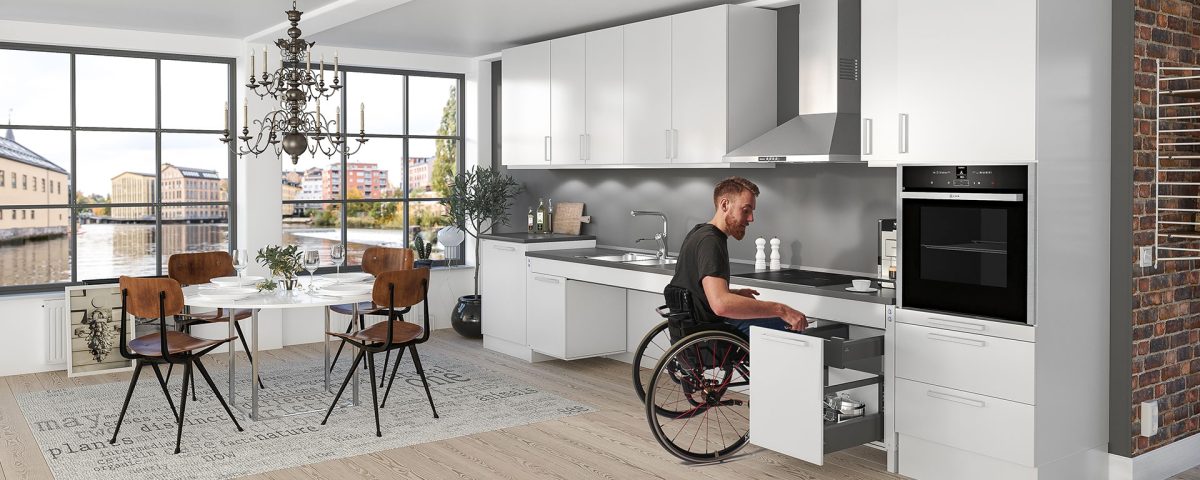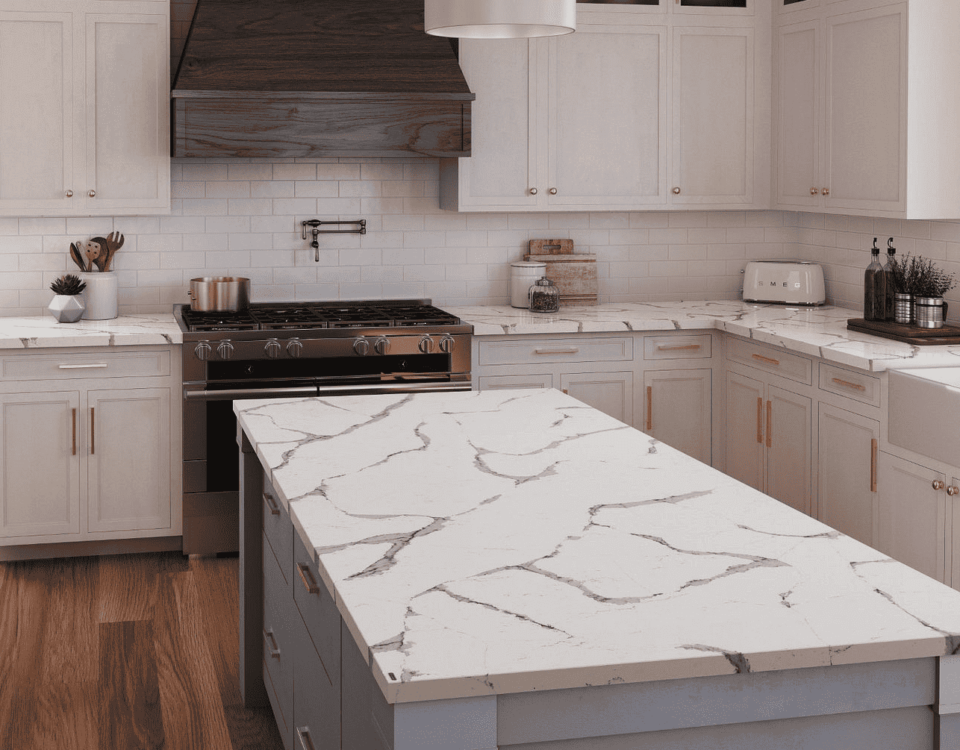This guide shows you what is important when furnishing and designing a barrier-free kitchen. Here you can find out what to consider in terms of dimensions and countertop plan, and how to place work equipment correctly.
What does a barrier-free kitchen look like?
Barrier-free living is becoming more and more important. With living spaces, bathrooms, and kitchens tailored to individual needs, the quality of life of people with disabilities and in old age increases.
A barrier-free kitchen is designed in such a way that it can also be used by people with physical disabilities. Kitchen furniture, electrical appliances, and utensils are accessible in a barrier-free kitchen for wheelchair users or senior citizens.
In addition to plenty of space, the arrangement and design of the electrical appliances and kitchen elements are particularly important. Height and position play a special role in kitchen planning.
Here it is often advisable to use solutions whose height is adjustable. Many elements of a kitchenette or fitted kitchen, such as the sink, should also be wheelchair accessible so that they can also be used while sitting.
When planning your kitchen, always bear in mind that a barrier-free kitchen is an individual matter. A wheelchair user has different requirements than a blind person. In this guide you will find out which equipment is suitable for which situation in life.
Freedom of movement in the barrier-free kitchen
A key point in kitchen planning is freedom of movement. According to DIN 18040-2, the movement area of a barrier-free kitchen must be at least 120 cm x 120 cm.
A wheelchair-accessible kitchen meets all the requirements of a barrier-free kitchen with a few additional aspects. The radius of movement here is 150 cm x 150 cm, for example. The kitchen furniture must have a minimum depth of 150 cm, while in the accessible kitchen it is 120 cm.
In addition to the movement area, the width of the doors also plays an important role. This should be at least 90 cm. Arrange work surfaces, electrical appliances and kitchen cabinets in such a way that walking distances are kept as short as possible. Commonly used utensils such as cutlery, cutting knives and pots should be within easy reach of everyone at all times.
Placement of electrical appliances
Fridge, stove and oven are among the most used appliances in the kitchen. Therefore, place them in the barrier-free kitchen so that they can be reached at a comfortable height.
The optimal working height is the height of the countertop. When using the oven, make sure that the door opens to the side so that it is not an obstacle when it is open. A self-cleaning function is particularly useful here. Cooker hoods should be built into the hob or be remote-controlled.
A shower hose on the sink makes handling the water easier. The sink should also be flat so that it can also be used from a wheelchair.
Floor plan and kitchen equipment
In addition to the height of the electrical appliances and work surfaces, the floor plan and the arrangement of the individual elements also play a key role in kitchen design. Countertops that can be driven under are useful here. In order to be able to reach any desired place at any time as a wheelchair user or with a walker, rollable kitchen base cabinets offer a solution. Some of these can be controlled electronically and their position can be changed so that they enable access to the hob, sink or countertop.
Use electronically lowerable kitchen wall units in the barrier-free kitchen. If necessary, you can lower it to a comfortable height so that you can reach cups and plates while sitting. Kitchen cabinets should be equipped with drawers or rotating systems.
Tip: With transparent shelves and glass fronts, you ensure that you can see what’s in the cupboard even before you lower it.
For your own safety, choose a non-slip and easy-to-clean floor covering in the kitchen. For example, tiles with a rough surface or PVC are suitable here. Note that the optimal working height is individual depending on the physical circumstances. As a guide, you should calculate a height of about 82 cm.
When installing sockets, make sure that they are easy to reach. Socket strips embedded in the countertop make working in the kitchen easier and are lowered again after use.
A handrail along the kitchen front may help you move around in the kitchen. With a corner kitchen you ensure short distances within the kitchen.
Discover Granite is the one-stop destination providing quality material and many options regarding color and patterns of Marble, Granite, and Quartz Countertops. Its excellent services have made it the best natural and engineered stone countertops fabricator in Virginia for over 40 years
We would also be happy to provide you with further information about our products and our current prices !!!
Contact Us
Schedule A Free Appointment & Ask For A Quote
Discover Granite and Marble believes in the importance of clients handpicking stones for their personal projects, which is why we offer showrooms and warehouses located at 9067 Jerrys Circle Manassas VA 20110.
For further information on kitchen countertops or to add granite, marble, or quartz countertops to your kitchen, call Discover Granite and Marble. You can also make a free appointment to get service in:
Manassas, Fairfax Station, Alexandria, Vienna, Clifton, Haymarket, Bristow, Gainesville, Wellington, Bull Run, Centreville, Nokesville, Dale City, Dumfries, Leesburg, Woodbridge, Charlottesville, Ashburn, Great Falls, Warrenton, Stafford, Chantilly, Culpeper, Sterling
Discover Granite and Marble is the best Quartz Granite Marble Countertop fabricator in Manassas, Virginia. We offer many options to customers to choose the best match for their countertop project with a contemporary style and affordable budget. You can use “granite“, “granite marble countertops”, “Quartz Countertop near me”, and” granite vanity top” to inform about countertops selection.







